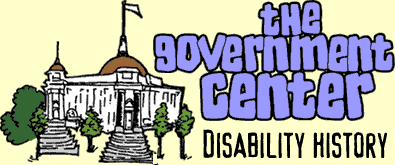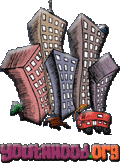
|
||
Understanding the Minority Group ModelPeople with disabilities taking charge; the disability rights movement In the early 1970s, a civil rights movement among people with disabilities was born. This movement was a lot like the civil rights movement among African-Americans in the U.S. in the late 1950’s. The message of the minority group model is that people with disabilities are strong and know what they want and need, but often are held back because of discrimination from others. The minority group model is a new model meant to shatter the message that people with disabilities are:
The minority group model has also encouraged people with disabilities to branch out from the parents’ movement and reminded them that their parents may not always know what is best for them. The most important thing to understand about the minority group model is that it encouraged people with disabilities to work together and ask society to stop discriminating against them and start treating them fairly. People with disabilities have made a lot of progress since the 1970’s. People with disabilities as professionals Ed Roberts was a man who had polio as a child and, as a result, used a wheelchair and needed to sleep in an iron lung that helped him breathe. Ed did not have use of his arms or legs, but could manipulate things with his mouth. In 1962, after graduating from high school, Ed decided he wanted to attend college and enrolled at the University of California-Berkeley. When he got there, he learned that he and many other students with disabilities were not able to live in the dorms like other students, but instead were housed in a ward at the University’s hospital. As Ed traveled the campus, he found many barriers that prevented him and other students with disabilities from getting the kind of access to the education that they deserved. Ed began holding meetings with other students to talk about their issues and what needed to happen to make the Berkeley campus more accessible to students with all types of disabilities. This group of students began to help each other when they could, and they also asked for larger changes from the university’s administration. As it grew and had success, this group began to work for change in the Berkeley community by asking for things like curb cuts for wheelchairs, accessible apartments and other housing options for people with disabilities, and a bus system that would be accessible for all people with disabilities. These ideas were very new at the time, as was the idea that a group of people who had disabilities could come together and help each other rather than asking for help from people without disabilities. Thanks to the leadership of Ed Roberts and the many Berkeley students with disabilities who helped him, Berkeley, California became the site of the first Center for Independent Living. Centers for Independent Living are places devoted to assisting people with all types of disabilities become active members of their communities, and are always governed by people with disabilities. Because of the efforts of Ed Roberts and others, the federal government now funds Centers for Independent Living and they operate all around the country. It has also become very common for people with disabilities to take charge in solving community problems that affect them. Try a Youthhood activity:Browse a Web site: |
||
What Can I Do Here? | Help FAQs | Curriculum Guide
Privacy | Disclaimer | About | Contact Us | Homepage
Last updated on December 5, 2018
 |
 |
 |
©2006 Regents of the University of Minnesota
The University of Minnesota is an equal opportunity educator and employer. Online Privacy













